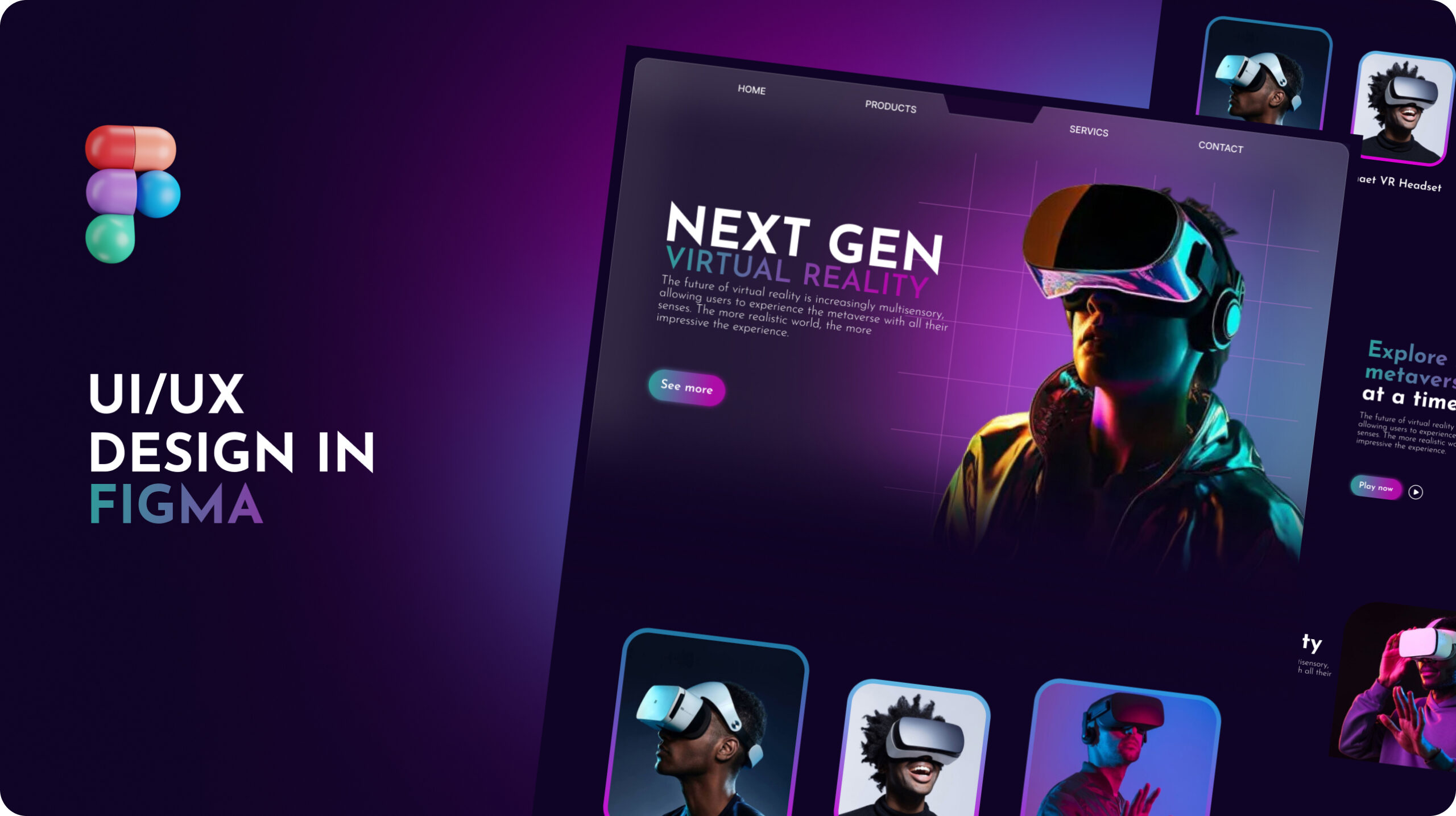In today’s fast-paced digital environment, businesses demand websites and mobile applications that are not only visually stunning but also intuitive, functional, and aligned with user expectations. At Designekta Studios, we understand that great design is at the heart of great digital experiences—and one of the most powerful tools enabling this is Figma.
Figma has revolutionized how designers, developers, and clients collaborate. It bridges the gap between visualization, implementation, and the final product, ensuring that every project is built with precision, creativity, and usability in mind. Let’s explore how Figma improves UX/UI for web and mobile app development, and why it has become an essential part of the design process at Designekta Studios.
1. Visualization: Bringing Ideas to Life
Every digital product starts with an idea. However, ideas need visualization to evolve into something meaningful. This is where Figma shines.
- Wireframes and Prototypes: With Figma, designers can quickly create wireframes to map out user flows, content placement, and navigation structures. These low-fidelity visuals serve as the blueprint for the product.
- Real-time Collaboration: Unlike traditional design tools that require constant exporting and sharing of files, Figma allows multiple stakeholders to view and comment in real time. Whether it’s a client, a project manager, or a developer, everyone stays aligned from the very beginning.
- Design Systems and Components: Visualization also benefits from reusable design elements. Figma’s component system ensures consistency across pages, whether designing a responsive website or a multi-screen mobile app.
This stage is about shaping ideas into clear, tangible visuals that reflect user expectations and business objectives.
2. Implementation: Turning Design Into Experience
Once visualization is done, the next step is implementation—translating designs into actual user experiences. Figma simplifies this transition in several ways:
- Developer Handoff: Figma’s built-in “Inspect” feature allows developers to extract CSS, measurements, and assets directly from the design file. This reduces miscommunication and speeds up the development process.
- Cross-Platform Design: Figma is web-based and works seamlessly across Windows, Mac, and even mobile devices. This flexibility ensures implementation teams can collaborate effectively, regardless of their setup.
- Interactive Prototypes: Before any coding begins, Figma enables the creation of interactive prototypes. Clients and developers can click through the design to understand how the final product will feel. This step reduces costly revisions later in the process.
- Responsive Layouts: Implementation also benefits from Figma’s auto-layout features, ensuring designs adapt beautifully across devices—from desktop screens to smartphones.
This phase ensures that the visual concepts are grounded in functionality and technical feasibility, bridging the gap between design and development.
3. The Final Product: Delivering a Seamless Experience
The last stage is delivering the final product—a website or mobile application that not only meets expectations but exceeds them. With Figma’s process-driven approach, the outcome is always more refined and user-centered.
- User Testing and Iteration: Because Figma makes it easy to update designs, user feedback can be integrated quickly before launch. This agility ensures the final product resonates with its intended audience.
- Consistency Across Platforms: Whether it’s a website or a mobile app, Figma ensures that the brand identity, color schemes, typography, and interactions remain consistent.
- Pixel-Perfect Execution: By the time the project goes live, every detail—from button states to micro-interactions—has been carefully tested and refined through Figma’s collaborative workflow.
The result? A final product that balances aesthetics with usability, creating digital experiences that engage users and drive results for businesses.
Why Designekta Studios Chooses Figma
At Designekta Studios, we believe that tools are only as good as the process they empower. Figma allows us to work smarter, faster, and more collaboratively. It improves transparency with clients, minimizes misunderstandings with developers, and ensures that the user always remains at the center of the design process.
Whether we are crafting a corporate website, an e-commerce platform, or a mobile application, Figma enables us to deliver digital solutions that are:
- Visually compelling
- User-friendly
- Scalable and future-ready
Final Thoughts
The journey of creating a digital product—whether a web platform or a mobile app—follows a clear path: visualization, implementation, and final delivery. Figma enhances every step of this process, transforming raw ideas into polished, user-focused experiences.
At Designekta Studios, our commitment to excellence is fueled by tools like Figma, ensuring that every design we deliver is not just functional, but also memorable.
